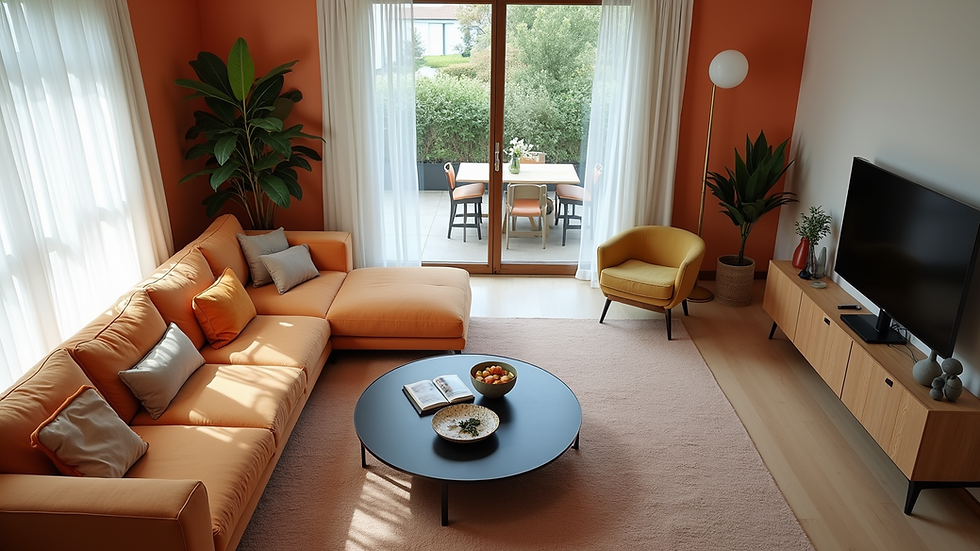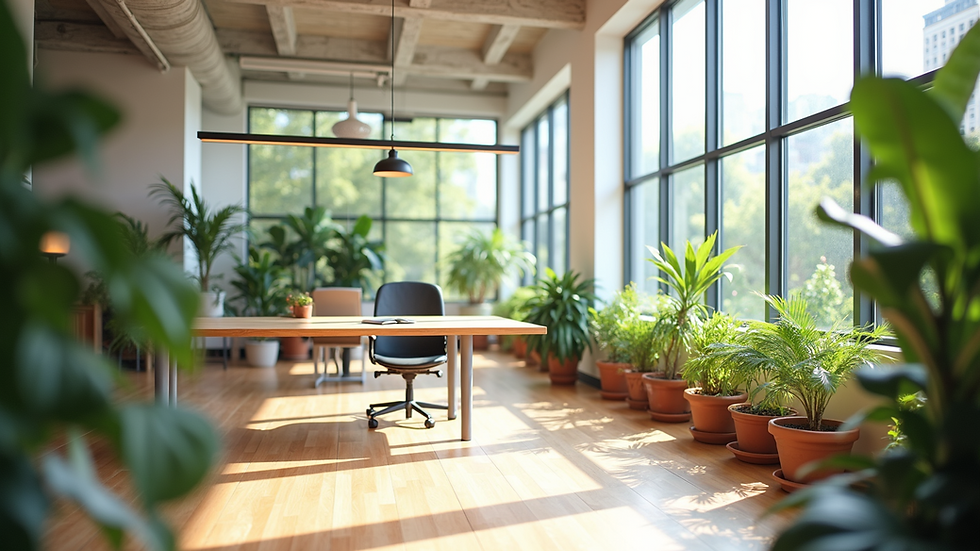The Role of Creativity in Modern Interior Design
- Gaurav Bhurke
- Jun 19
- 4 min read
In the fast-paced world we live in today, creativity plays a pivotal role in modern interior design. With ever-evolving trends and technological advancements, the art of designing spaces goes beyond aesthetics; it becomes a form of expression and a reflection of one’s personality and lifestyle. Interior designers are now tasked with balancing functionality and style while embracing sustainable practices—even more now than before.
Innovative Design: The Foundation of Modern Interiors
Innovative design is at the core of contemporary interior design. It involves creating unique, stylish spaces by incorporating the latest trends, technologies, and materials. Designers strive to create environments that are not only visually appealing but also meaningful and functional.
For instance, open floor plans have become increasingly popular. They promote a sense of freedom and flow, allowing natural light to penetrate deeper into a home. An innovative designer's challenge is to maintain distinct areas within such open spaces without sacrificing the overall aesthetic.

Moreover, the use of multifunctional furniture is an innovative practice that can make a big difference in maximizing space. Pieces like ottomans that double as storage units or coffee tables that can transform into desks are more than just trendy—they are practical solutions for modern living.
Sustainability and Creative Strategies
Sustainability in interior design reflects a growing awareness of environmental responsibility. Designers are now prioritizing eco-friendly materials and practices in their creative processes. For example, using reclaimed wood for furniture or recycled glass for decorative accents not only adds a unique aesthetic but also reduces waste.
An action-oriented approach to sustainability could involve selecting paints that are low in volatile organic compounds (VOCs) to improve indoor air quality or incorporating energy-efficient lighting solutions. These eco-friendly choices can inspire creativity while providing clients with healthy and safe environments.

Statistics show that 77% of consumers are willing to pay more for sustainable products. This demand challenges designers to think creatively about incorporating sustainable practices into their designs while addressing client expectations. Embracing eco-friendly options not only elevates design but also resonates with a broader audience looking for responsible choices.
The Intersection of Technology and Creativity
The integration of technology into interior design showcases how creativity can enhance functionality. Smart home devices have revolutionized how spaces are inhabited and maintained. From automated lighting to smart thermostats, technology allows for innovative solutions that cater to lifestyle needs.
Designers can now integrate these features seamlessly, so they enhance rather than detract from the space’s aesthetic. For example, a smart home system can control room temperatures while being tucked away discreetly, allowing for a clean and uncluttered look.
The rise of virtual reality (VR) technology is also transforming the design process. Designers can create immersive experiences for clients, allowing them to visualize changes before they are made. This innovative approach saves time and encourages feedback during the planning phases, resulting in more tailored designs.

The Importance of Personalization
In today’s world, personalization is key. The role of creativity is to understand a client's unique vision and translate it into a cohesive design. This involves not just selecting furniture or paint colors, but crafting a narrative that resonates with the individual's taste and lifestyle.
One effective way to personalize a space is through the use of art and decor that reflects the occupant's history. Custom artwork or family heirlooms can bring warmth and individuality to a space. Designers can collaborate with clients to curate pieces that tell their story, making the design feel uniquely theirs.
Mobile apps and online platforms also contribute to the personalization of interior design. They allow clients to visualize how different elements will look in their space, helping to refine their choices based on personal preferences.
Embracing Adaptability and Innovation in Design
In an unpredictable world, the ability for a space to adapt is invaluable. As lifestyle needs evolve, so too should our environments. Interior designers must embrace adaptability and innovation to create spaces that offer flexibility and growth.
For example, a room designed with movable partitions can easily transform from a home office to a guest room, accommodating changing needs over time. The ability to redesign a space without significant renovations is a hallmark of modern interior design, further showcasing the role of creativity in achieving effective solutions.
As more people embrace remote work, creating functional workspaces at home has become essential. Designers are finding innovative ways to combine work and relaxation areas, resulting in spaces that promote productivity and comfort.
Crafting Innovative Spaces: A Future Perspective
Looking ahead, the future of interior design will undoubtedly be shaped by the continued intersection of creativity, technology, and sustainability. As urban living spaces become smaller, innovative design solutions will be needed to maximize available square footage.
Emerging trends such as biophilic design, which incorporates nature into interiors, will likely gain traction. Designers will explore ways to interact with natural elements, using plants and natural materials to recreate a sense of tranquility and connection to the outdoors.
Additionally, as more businesses shift to flexible or hybrid work models, office spaces will need to evolve. The creative input of designers will be crucial in imagining work environments that foster collaboration while allowing for privacy and focus.

Ultimately, the role of creativity in modern interior design is to inspire, evoke emotions, and forge connections between people and their spaces. Designers are called upon not only to beautify interiors but to innovate and adapt as our lifestyles continue to evolve. With these skills, creativity will remain at the forefront of shaping the spaces we inhabit and thrive in.




Comments